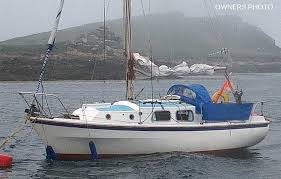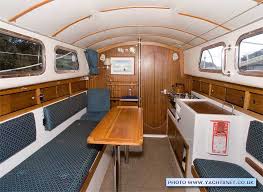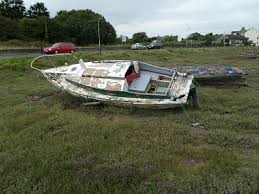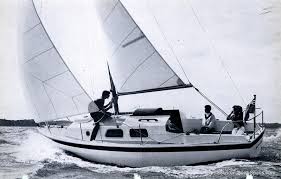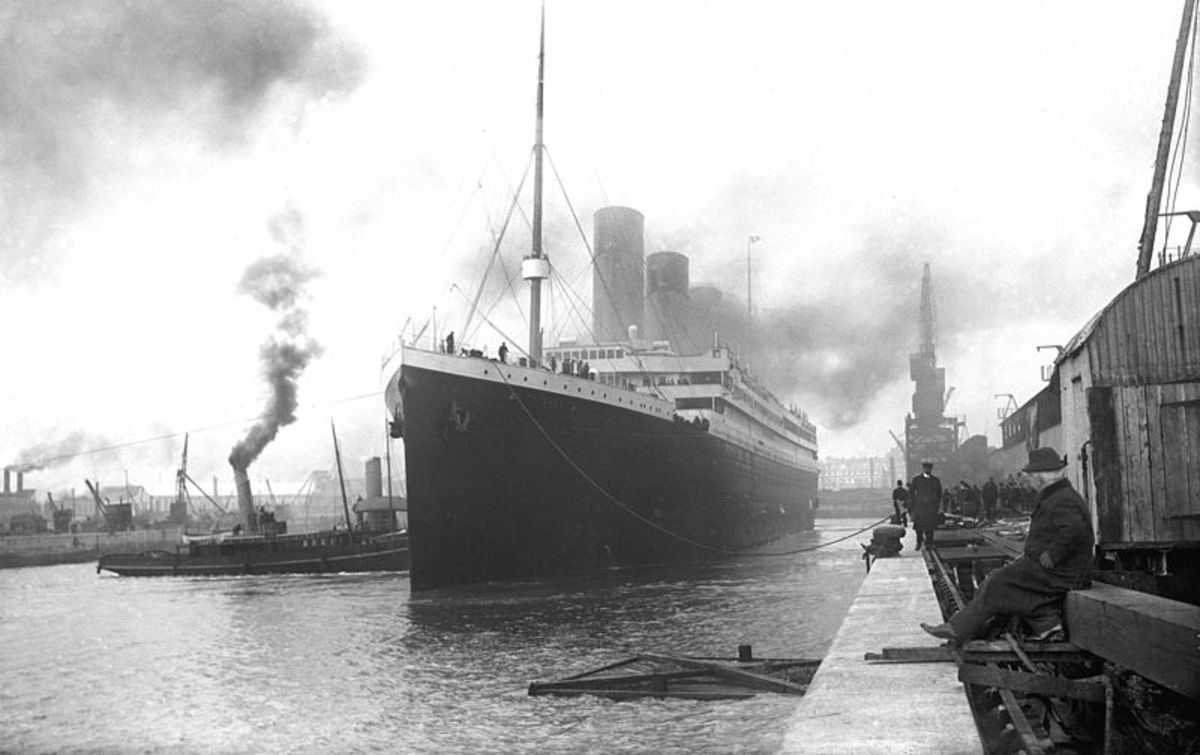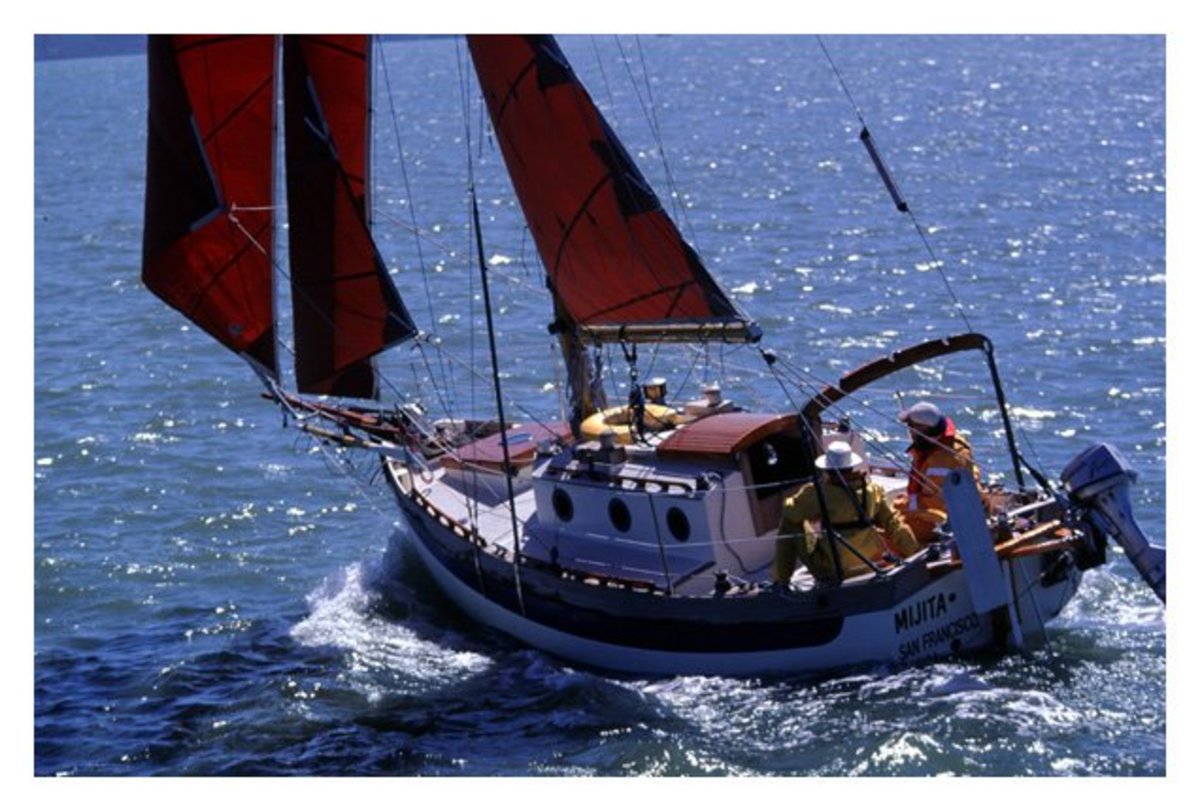The Westerly Centaur: She Sails On and On
Not the most glamorous, Centaurs had their own charm
Click thumbnail to view full-size



Changing owners and loved again and again, this little yacht was the Icon of Westerly
Affable and affordable, A Westerly graced many a mooring.
Any would-be sailor with loads of ambition but not much money has heard of the early Westerly Sailboats.
Chinese goods have done little for individual design.
In these days of planned obsolescence, computer-generated design and quantity over quality, fine, hand-crafted objects are few and far between unless one collects antiques.
We live in a world where local craftsmen and small factories are cast aside, as the labor costs of manufactured goods and the needs of the mass market determine how and where they are made.
China has emerged as the world's factory, this huge nation of 1.6 billion worker-ants churning out 25% of the planet's consumer goods, sent to the four corners of the Earth in huge container vessels. China produces 80% of the world's air conditioners, 60% mobile phones and 40% shoes: and all this since 1990 when the nation only had a tiny 3% of manufactured items.
We have become accustomed to finding (and smelling) the same merchandise in store after store; mostly well made to a degree, but lacking any of the individuality goods exhibited when they were home-made, or came from Europe and other non-Asian sweat-shops.
But some small firms in Britain and elsewhere avoided the mass market.
LIke the proverbial mighty oak that began from the tiny acorn, the ideas that would lead to the 26-foot sailboat, the Centaur, began in the rivers and lakes of Auld England well before WW2.
His love of small boats as a child brought him to their manufacture after WW2
A keen dinghy sailor, Denys Rayner, went to war for Britain, but never forgot his childhood memories of the small wooden boats he loved.
After hostilities ceased, he joined Beacon Boats in Donnington to make plywood dinghies, intruducing revolutionary methods of maring plywood bending and waterproofing which are still used today.
Disliked at first, Fiberglass would revolutionize the boat industry
When the new material of glass fibre ("Fibreglass") was introduced, Beacon was not interested, so Rayner gave up on plywood and turned his attentions to "plastic" yachts. Well laid-up glassfibre soon became the material of choice for boat buiders all over the world: it was inexpensive when compared to steel or aluminium and far simpler to construct than high-maintenance wooden craft
Fibreglass could be laid up in any shape over suitable frames and used to both mold the hull and the interior bulkheads of boats.
Westerly Marine was formed, about to be a world beater.
Rayner and partners then founded the firm that was shortly to become the largest small sailboat builders in Britain, Westerly Marine Construction.
Starting with the Westerly 22 and the Westerly 25 in the early 1960's - many of which are still proudly afloat today - the company forged ahead, sadly losing it's great founder, Denys Rayner, to cancer in 1967.
So he would never see what was to be his firm's icon and greatest selling sailboat of all time in Britain, the Centaur.
But first would come a series of delightful smaller yachts: the Nomad, 22; the Nimrod, 18 and the Cirrus, 22, built before, during and after the founder's tenure. These popular small yachts can still be found in numbers for sale around the United Kingdom.
Westerly stood by its mandate for 30 years.
The company's philosophy which would stand it is good stead for nearly 30 years was:
"A good, stiff yacht that would sail well in most conditions; be made in the bilge keel style to allow for low tide, even-keeled grounding in Britain's rivers and coasts and comfortable living quarters."
More than any other, the Centaur showcased this belief.
In her case, this meant standing head room, two cabins, a separate toilet (the head) and a usable kitchen (the galley) as well as a skipper's double sleeping area in the forward cabin and one or two bunks in the rear.
Proper inboard diesels meant safer voyages.
Rayner and following designers, such as John Butler who replaced Rayner, switched from the ugly outboard motor on the stern to small and economical diesel engines, often housed below the cockpit sole (floor).
Many boats still around today have been re-engined several times as well as completely re-rigged and fitted out more than once.
The Company's greatest boat became a reality.
The Centaur was born in 1969. Westerly called on the prestigious firm of Jack Laurent Giles for the design. Giles was already world famous for some of his designs which had captured blue water sailors the world over, such as "Myth of Malham," beating all comers in deep water racing.
The Centaur encompasses everything Denys Rayner had held dear plus the forward looking brilliance of Giles who had been designing record breaking yachts since the 1940's.
There were 2500 Centaurs built and they are still described by yacht aficionados as "probably the best starter boat money can buy." This, despite the influx of all the boats from Europe, which challenge eventually did prove too much competition for Westerly, winding up in 2000.
The Centaur was a stepping stone to the company's greatness.
The company had gone on to build some 53 more models, some as large as 48 feet. Some other outstanding yachts were the Pageant 24, (The "Baby Centaur"), Chieftain 26, (Updated and upgraded Centaur), Longbow 31, Westerly 33, Discus 33 and Konsort 29, (This last another of the most sought after used boats around).
It is pretty much a given that fibreglass yachts defy destruction: although many have got old and died where they floated, on obscure river banks or on far away shores. The majority of Westerly's 11,000 boats built are still afloat somewhere and loved by someone who may be hatching plans to give the old yacht a new lease of life..
As is often the case, a manufacturer will forget his mandate on a grab for profits.
But as "Practical Boat Owner" magazine commented in October, 2008, (the company's failure) ..."was an illustration of Westerly's propensity of trying to grab a share of every market, instead of capitalizing on its strengths - which lead to its untimely demise."
But the corpses refuse to be buried.
Demise or not, there are still many thousands of small, well-built and seaworthy small saiboats plying the inland and coastal waters of Britain, as well as the many intrepid skippers who have conquered oceans in them.
Sailors rarely lose money on a Centaur these days.
A good Centaur can now be found for as little as £5,000 pounds, and an exceptional model for just £8000, half the price of a small car. They would undoubtedly command a higher price except for the greed of marina owners, along with draconian taxes and fees imposed by Westminster and local government, not to mention the disproportionate price of insuring a boat (or anything else) in the UK.
Along with maintenance and running costs, this means owning a 20-foot, plus, boat in Britain is not for the lowest income group.
Maybe we should let the Chinese have the last word...listening, Denys!?
(A quick glance online showed me about 20 Chinese companies making and exporting all types of small boats, motor and sail...ones that would easily fit in a large container).
Turn over, Denys Rayner, get comfy, I bet they aren't still floating in 50 years!

